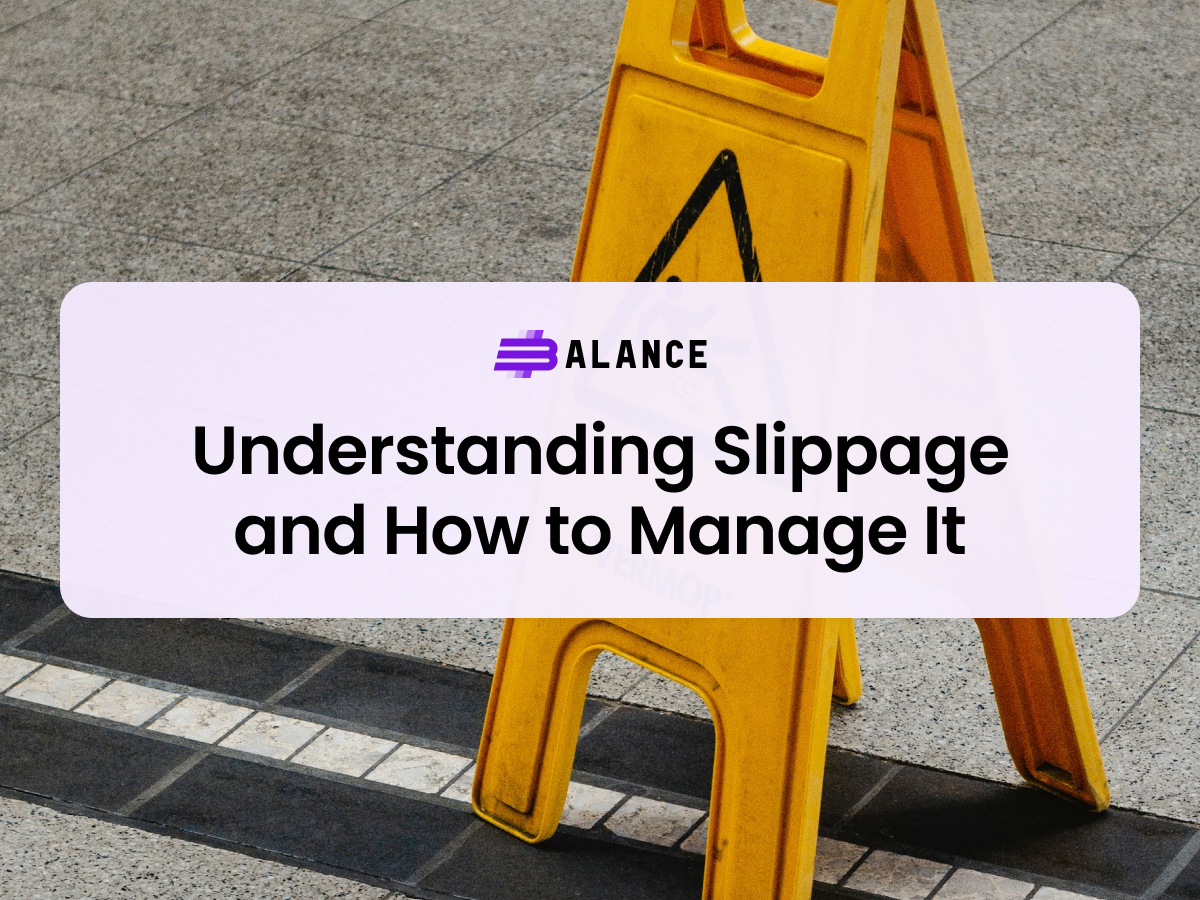Whether you’re new to trading or have conducted hundreds or thousands of trades, you’ve likely noticed that every now and then, your numbers don’t line up exactly how you thought after executing. That difference between your expected price and the actual price is known as slippage—and it’s fairly common in crypto. The good news is that there are ways to mitigate excessive slippage as you navigate the crypto world. Let’s get into it.
What Is Slippage in Crypto Trading?
Slippage describes the difference between the expected price of a trade and the actual price at which it executes. It occurs when market conditions change rapidly, leading to unexpected price movements before a trade is completed.
In crypto, slippage can happen in decentralized (DEX) and centralized (CEX) exchanges and is particularly noticeable in highly volatile markets or when trading assets with low liquidity.
Two Types of Slippage
- Positive Slippage: When a trade executes at a better price than expected, it results in a higher quantity than expected from your swap.
- Negative Slippage: When a trade executes at a worse price than expected, it results in a lower quantity than expected from your swap.
Slippage is an essential factor to consider in crypto trading because it can significantly impact your returns—especially when dealing with large orders or trading assets with less liquidity. So, how do you navigate it?
Why Does Slippage Happen?
There are several factors that can contribute to slippage in crypto trading:
- Market Volatility: Cryptocurrencies are known for rapid price swings, causing slippage when orders can’t be executed instantly.
- Liquidity Levels: The less liquidity a pool has to offer, the higher the potential slippage due to the constant product formula. If the pool you’re trading against has a large shift in the asset ratio, your trade might execute at a noticeably different rate than you expected.
- Order Size: Large orders can move the market price, especially in low-liquidity tokens.
- Network Congestion: On-chain transactions can be delayed due to blockchain congestion, which is like a traffic jam while processing trades. Blockage can increase the chances of price changes before execution.
Understand & Manage Slippage With 3Balance
3Balance is a crypto portfolio management tool that not only helps you rebalance your assets efficiently but also assists in minimizing the impact of slippage. Here’s how:
- Smart Rebalancing Execution: The platform intelligently routes trades through the most efficient liquidity sources, reducing the extent of slippage by spreading trades across the most competitive liquidity pools.
- Built-In Slippage Tolerance: Currently, 3Balance V1 has a fixed slippage tolerance of 1%, meaning if the market slips by more than 1%, the trades won’t execute. Soon, 3Balance users will be able to customize the slippage for their entire rebalance with a default of 2%. They will also have the option to get a new quote or abort the remainder of a rebalance should the market move beyond the slippage tolerance, making it easier to complete a rebalance in volatile market conditions
- High Liquidity Sources: 3Balance allows for swaps across blockchains and tokens with highly liquid, on-chain liquidity sources. This allows for trades to execute more quickly, minimizing slippage.
How to Reduce Slippage in Your Crypto Trades
While slippage is inevitable in fast-moving markets, here are some strategies to reduce its impact:
- Use Limit Orders: Instead of market orders, use limit orders to set the exact price you want to execute a trade.
- Trade During High Liquidity Hours: Markets have peak trading hours when liquidity is higher, reducing slippage.
- Choose Liquid Assets: Stick to assets with higher trading volume and deeper order books.
- Monitor Your Slippage Tolerance: Adjust your slippage settings in your trading platforms of choice to match your risk appetite.
Don’t Be Afraid Of Slippage—Understand & Mitigate It!
Slippage is a common challenge in crypto trading, but it doesn’t have to be a major issue if managed properly. By understanding how it works and using the right tools—such as 3Balance’s smart execution, slippage controls, and trade optimization—you can take better control over your portfolio management.

